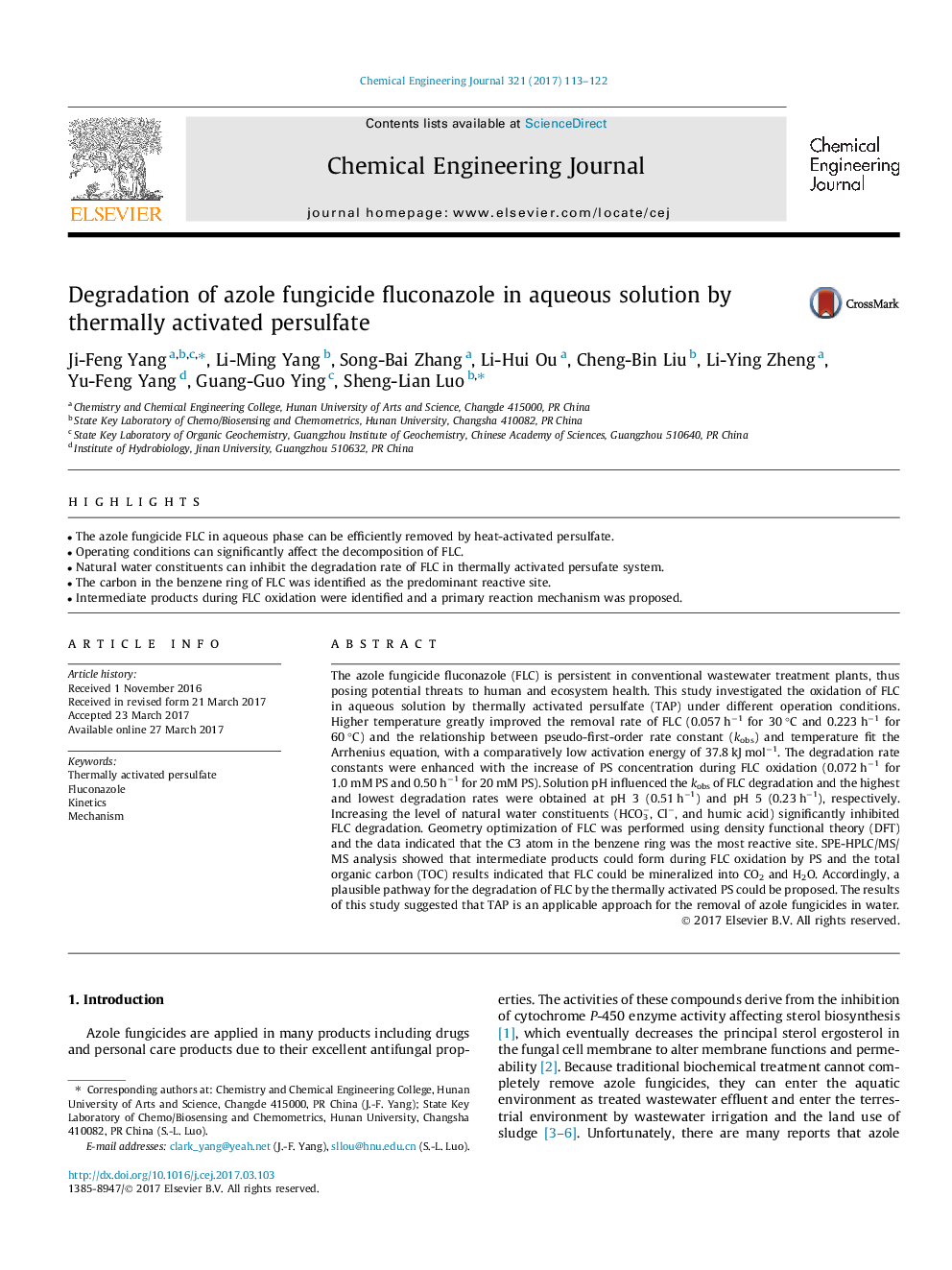| کد مقاله | کد نشریه | سال انتشار | مقاله انگلیسی | نسخه تمام متن |
|---|---|---|---|---|
| 6465787 | 1422957 | 2017 | 10 صفحه PDF | دانلود رایگان |
- The azole fungicide FLC in aqueous phase can be efficiently removed by heat-activated persulfate.
- Operating conditions can significantly affect the decomposition of FLC.
- Natural water constituents can inhibit the degradation rate of FLC in thermally activated persufate system.
- The carbon in the benzene ring of FLC was identified as the predominant reactive site.
- Intermediate products during FLC oxidation were identified and a primary reaction mechanism was proposed.
The azole fungicide fluconazole (FLC) is persistent in conventional wastewater treatment plants, thus posing potential threats to human and ecosystem health. This study investigated the oxidation of FLC in aqueous solution by thermally activated persulfate (TAP) under different operation conditions. Higher temperature greatly improved the removal rate of FLC (0.057 hâ1 for 30 °C and 0.223 hâ1 for 60 °C) and the relationship between pseudo-first-order rate constant (kobs) and temperature fit the Arrhenius equation, with a comparatively low activation energy of 37.8 kJ molâ1. The degradation rate constants were enhanced with the increase of PS concentration during FLC oxidation (0.072 hâ1 for 1.0 mM PS and 0.50 hâ1 for 20 mM PS). Solution pH influenced the kobs of FLC degradation and the highest and lowest degradation rates were obtained at pH 3 (0.51 hâ1) and pH 5 (0.23 hâ1), respectively. Increasing the level of natural water constituents (HCO3â, Clâ, and humic acid) significantly inhibited FLC degradation. Geometry optimization of FLC was performed using density functional theory (DFT) and the data indicated that the C3 atom in the benzene ring was the most reactive site. SPE-HPLC/MS/MS analysis showed that intermediate products could form during FLC oxidation by PS and the total organic carbon (TOC) results indicated that FLC could be mineralized into CO2 and H2O. Accordingly, a plausible pathway for the degradation of FLC by the thermally activated PS could be proposed. The results of this study suggested that TAP is an applicable approach for the removal of azole fungicides in water.
Journal: Chemical Engineering Journal - Volume 321, 1 August 2017, Pages 113-122
